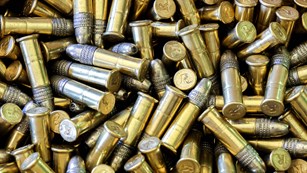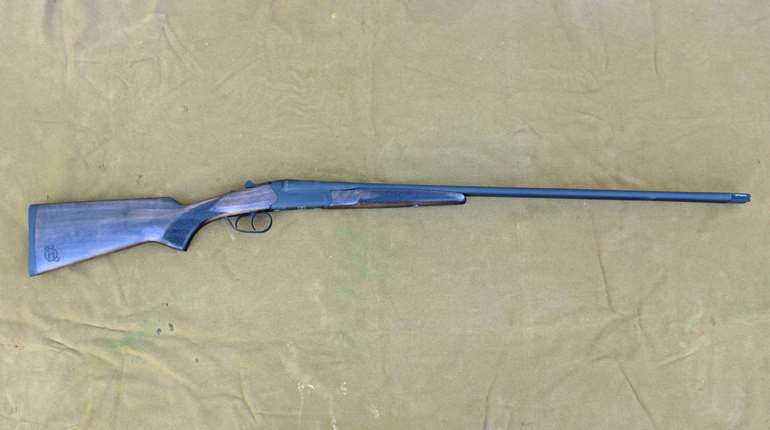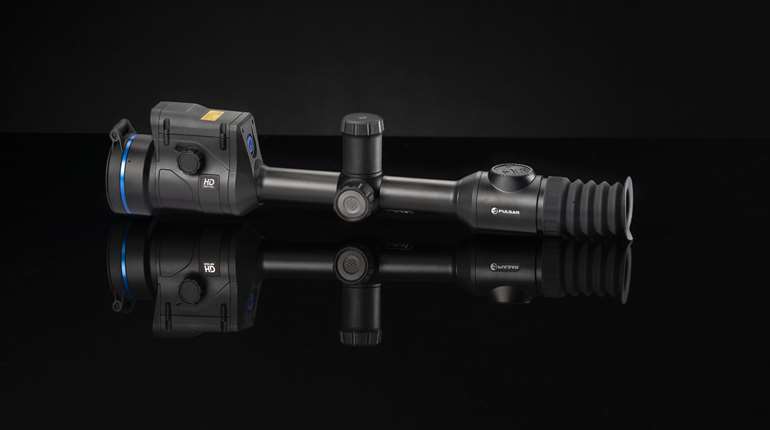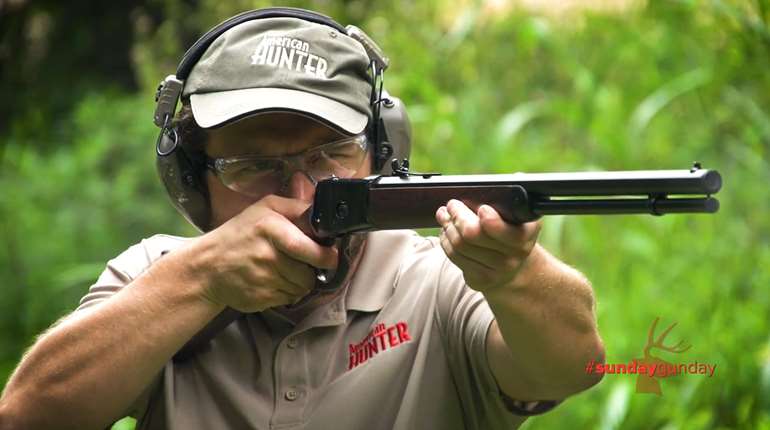The goal is 30 inches. Or 190 inches. Or thicker than your wrist. Or just high, wide and handsome. However you measure a big mule deer, the hunt for one is the real trophy, the real adventure. That collection of bones atop the head of a mature buck ghosting above the sage will suck the breath right out of you and kick your heart up into your Adam’s apple. Thirty minutes into my hunt on the High Lonesome Ranch in Colorado, my heart was in my Adam’s apple and I was reaching for my rifle.
“Not bad, but I think we can do better,” my guide said from behind his binocular.
When your guide calmly tells you that while you’re ogling one of the largest bucks you’ve seen in years, you know you’re hunting the right place.
“You’re saying I should not shoot this buck?” I asked just to make certain I’d heard correctly. The deer in question was most hunters’ idea of a calendar cover, the pin-up doll of mule deer. Dark, blocky body. Bull neck. Black forehead contrasting with a nearly white muzzle and throat patch. Long, namesake ears not nearly long enough to span the dark, double-forked antlers rising above them. A gulp buck, the kind that makes you swallow before asking your young guide if he’s crazy.
“Are you crazy?” I asked Scott Bystol.
“Maybe. But I still advise you not to shoot this buck. We should find bigger ones.” And we did.
This is what comes of hunting Colorado, a state that consistently produces the biggest mule deer in the world. This is what comes of hunting a private ranch on which hunter numbers and harvest can be controlled to maximize buck age and hunter success.
“We try to take only bucks that are 4 years old or older,” Bystol told me during our four-day hunt in the valleys, canyons, badlands and high country near the start of the famous Book Cliffs region stretching from Grand Junction, Colo., west into Utah. The High Lonesome is a recreational ranch set in a deep mountain valley where badlands-like buttes seem to leap from the valley floor to tower above rather narrow valleys in which small streams water a band of willows and other riparian trees. The rest of the valley shrivels under the desiccating summer sun, except for fields of wheat and grass the ranch irrigates. Otherwise, its dry grass and sage brush. Those give way to junipers on the slopes, which in turn yield to pines and eventually Doug firs near the top of a high plateau climbing to 8,000 feet. Runoff waters have carved a labyrinth of draws and canyons in which not just mule deer but elk, black bears, coyotes and cougars hide. The vertical terrain more than doubles the land area indicated on a flat map, and the scenery is classic Western drama—the kind of place where you want to make a movie.
“Cougars may be our biggest problem,” Bystol acknowledged when I asked about big buck survival in this rugged landscape. “In winter they key on older bucks, which are usually weakened and often injured from the rut. We see a lot of big, promising 4- and 5-year-old bucks that just seem to disappear the next season. Either they’re moving to other areas, are being eaten by cougars or are just too wary for us to find in season. They do tend to stick to deep brush or timber until the heart of the rut, which is still three weeks away. But a few show up early every year, and that’s what we’re looking for.”
Our looking involved driving four-wheel-drive trucks up valley and canyon walls through steep, looping dirt and gravel trails while stopping to glass side canyons and the main valley floor. Once on top we hiked sage flats and side draws to search additional country, the kinds of quiet, aspen-shrouded refuges where deer find solitude.
“I’ve got a horizontal line in those aspens,” I said one mid-morning as we hiked and glassed a promising looking side draw. In habitat that is mostly vertical trunks, the horizontal backs and bellies of deer stand out nicely. “About three-fourths of the way to the top, far side of the draw right in line with that big dead fir.”
“Got it,” Bystol said. While he studied the animal, I moved left to get a fresh angle. Finding a clear view through all the timber wasn’t easy, but I eventually uncovered an avenue that illuminated a chunk of antler too long to belong to a mule deer. “Looks like a raghorn elk.” We eased closer to confirm, then kept moving.
Elk is another popular species on the ranch. Mixed herds of a dozen to nearly a hundred cows, calves and raghorn bulls fed or ran across the high meadows. Their tracks and droppings littered the trails and marked the mud around watering holes.
“Nice elk, but where are all the mule deer does and fawns?” I asked after our first day at elevation. “Looks like prime country.”
“It is, but they’ve figured out the forage is better in the bottoms where we irrigate. Predator pressure might be less there, too. And there’s less competition from the elk.”
During the hunt we saw dozens of mule deer on the valley fields, but no elk. “Our bowhunters take good branch-antlered bulls every year, and we just finished several bugle hunts. They stay high this time of year where it’s cooler and they can disappear into the heads of these drainages. They stick to deep timber in the main valleys, about halfway up or higher. Winter is when they take full advantage of our irrigated fields.”
Older bucks must have been staying high or sticking to timber, too. Bottom fields were dotted with females and young bucks well after sunrise, but bigger bucks were moving off by first light. That didn’t stop Bystol from checking the fields.
“I just want to make sure there aren’t any really big bucks sneaking in here before we dedicate all our time to working the high country,” he explained the first morning just before we spotted that first jaw-dropper buck. Two miles farther up the valley we found more.
“There’s a solid buck,” Bystol said as he peered through a spotting scope above the highest valley field. “See his head just above the sage on the far side of those does?” he asked. “Maybe a 4-year-old moving down early to check things out.”
The buck appeared to be carrying 4x4 antlers that spread at least 26 inches and climbed about that high. His forks looked fairly deep. Spread was impressive, but tine length often adds much more to the total score. Bystol knows this, I know it, and we were both looking for it when the buck stared over his shoulder and began to move.
“Hey, look what’s coming out!”
We’re a good half-mile from the action, but at 10X and then 30X the evidence is pretty obvious. An even bigger buck is prompting the first buck to move on down the line.
“Look at the attitude of this guy,” I noted. “He’s definitely the aggressor. But their racks look about the same.”
“Yeah, but check out the body,” Bystol said. “This one is bigger, chunkier. I think he’s a year older. That’s what gives him the attitude. Bigger, older, more confident.” We watch as the new buck steadily escorts the other one off the field. They disappear into an erosion cut and some deep sage but eventually reappear a hundred yards farther down the valley. “He’s still pushing. It’s too early for the rut, but maybe this is a new buck just moved into the valley and they don’t know each other.”
It is clear the two males are deeply involved in the ancient business of establishing a hierarchy. And both carry larger antlers than the first big buck of the morning that had nearly tempted me into shooting. Bystol was proven correct, and it hadn’t taken an hour to do it.
“This might be a good buck to take,” he suggested as the pair continued walking steadily, each stride taking them farther from us. But now I was beginning to appreciate the potential of this lonesome ranch. If we’d seen this many good to great bucks already, perhaps we’d find an even more spectacular specimen with additional searching.
“Think these two will hang around a few days?” I asked, hopefully.
“Probably. No one else will be hunting here this week. Our other clients are in another basin. If no road hunters do something silly like trespass or try shooting from the road, these should be undisturbed for a few days at least. And they’ve got plenty to eat here, good water and all those does.” We judged it worth the risk to leave those two bucks alone while we hunted more of the ranch.
I’m glad we did because I saw more of this spectacular country plus much of the habitat management the ranch was practicing to improve the soils, vegetation and wildlife. They’d planted native grasses into formerly overgrazed sheep pastures along with a mix of native forbs so important to browsing deer. We saw blue grouse, coyotes, bear tracks, plenty of deer and elk sign and indications that big game was finding the High Lonesome suitable habitat. Its border fences met up with miles and miles of public BLM land, so the ranch surely contributed spillover that improved hunting on public land, too. “As winter progresses, these deer move through the ranch and down onto lower elevation ranches and public lands,” Bystol explained. “We keep a tight watch for poachers but there’s a lot of country here and not nearly enough conservation officers to watch all of it.”
Though we prowled the high country and glassed a lot of superb mule deer habitat, warm temperatures and the mid-October season did us no favors. The does were sticking to the rich bottomland fields and the high country bucks apparently were sticking to deep cover. Each day we glassed the valley where we’d left the two largest bucks but didn’t see them. Until day four.
“There he is. That smaller buck,” I said. “Now I wonder if his competition is back.”
We glassed anxiously. Tall, wide antlers emerged from a thicket of sage. “I think I see him,” Bystol said, directing me to the buck. “Yes, that’s him. If you want him, we’d better try right now ’cause he’s done feeding and is heading out.” Sure enough, the bruiser was walking steadily off the irrigated feed fields toward the dry pasture and sage brush below. “If he gets into the cedars on that far slope, he could be gone in an instant. Grab your rifle.”
We ducked into the tall sage on our side and began dropping into the valley, angling in the same direction as the buck. We were behind him and out of his immediate line of sight. If we kept to the erosion channels and high sage, we would be able to cover ground quickly. And we did.
“Let me check,” Bystol suggested after we’d splashed across the main creek and climbed the steep, far bank. He eased to full height, scanning ahead where we expected the buck to be. It wasn’t.
“Don’t panic, but get up here,” he added. “He’s probably just behind some sage or in a dip or something, but we’ve got to get higher and be ready in case he pops up. Let’s cross that pasture fence as quietly as we can and head for that little ridge.”
That’s when a doe and two fawns burst from the sage and bounced away wildly. Fortunately, they headed up valley toward the other females. We hurried to the fence and climbed over, scanned once more for the buck then pushed on toward the higher ground where I caught a glint of antler far in the distance.
“I think I’ve got him,” I hissed, “about 400 yards out and heading south, uphill.” We watched through our binoculars. It was him all right. From this close distance his antlers looked bigger and heavier than ever. But he did indeed appear to be heading for bedding cover amid cedars and pines where rising thermals would carry the scent of danger to him. He’d have a commanding view of the valley, too, seeing anything moving.
“Can you shoot from here?” Bystol asked, knowing the 140-grain, highly aerodynamic Berger VLD bullet in my custom Holland 6.5-280 Ackley rifle was more than capable of flying true at that range. I took one look at the sage and knew the answer.
“No way. Brush is too tall. Either we get higher or he does.”
“Then let’s get closer,” Bystol said. If we drop into this little side valley, he shouldn’t be able to see us. I’ll move when he puts his head down. Whistle if he looks up. Then you come.”
The approach worked perfectly. I whistled softly to stop Bystol just once. The buck looked up, but never back. Then I followed, and within seconds was out of sight. We walked brazenly but softly up the low ridge until we again spotted our quarry. He was easily inside 300 yards but already onto the canyon slope beside the first cedar. I looked for a clear path through the sage, found it, sat with my back against a sage to steady it, spread my Bog-Pod tripod, lay the fiberglass stock into it and chambered a round.“Range?” I whispered.
“Hundred eighty-seven yards.”
“Peak trajectory,” I noted. “Should land about 3 inches high. I’ll hold low behind the shoulder. Call my shot.”
I followed the buck for several seconds in the scope, controlling my excitement, knowing with a quartering breeze from our left that he wasn’t going to suddenly spook. Even if he turned and spotted us, it would take him a few seconds to figure us out—if he could even detect us sitting in full camo in the sage. I had the time to wait for a good, broadside shot, and he soon offered it, turning to look back over his valley.
“Here goes,” I said, and tightened my forefinger pad against the 1.5-pound pull of the Jewell trigger.
“Got him,” Bystol said just as the whomp of a solid hit echoed back. The buck humped, took a step and swayed. “Better hit him again.”
“Naw,” I said. “He’s dead on his feet.”
“Still, why take chances? If he gets up into those cedars ... ”
I put a second round behind the shoulder and he tipped over into the sage. It was unnecessary. The first had destroyed the heart and lungs.
This was no world-record buck, but he was a solid bruiser that missed the all-time B&C book by less than 8 inches. More importantly, it was taken by fair chase in steep, dramatic country long associated with the majestic, stunning mule deer—one of the hardest trophies to find in today’s hunting fields. At 5,500 to 8,200 feet in elevation, the High Lonesome Ranch was certainly high, but with all those deer and elk, it was anything but lonesome.
High Lonesome Ranch
275 County Road 222
De Beque, CO 81630
970-283-9420




































